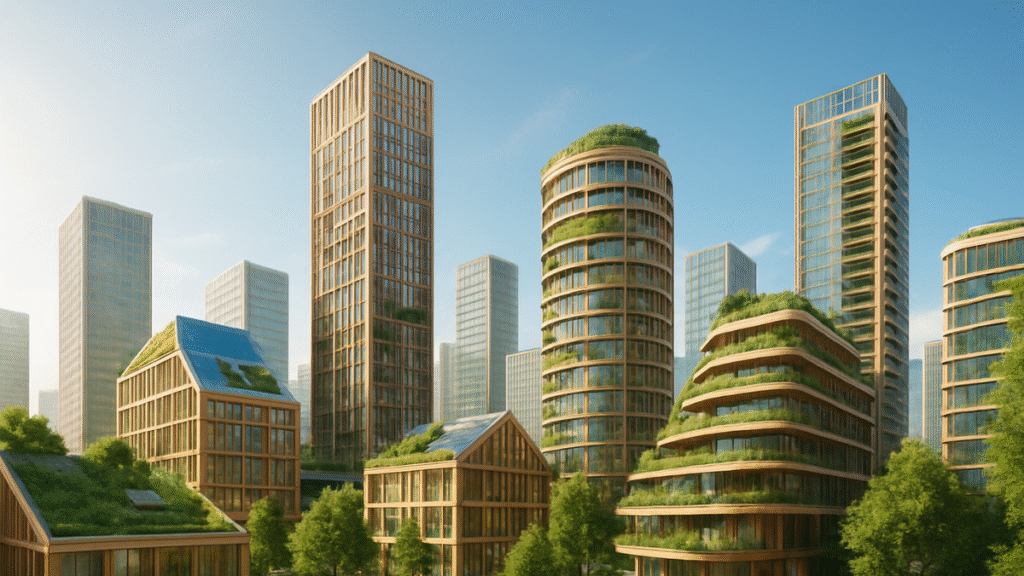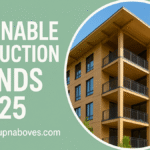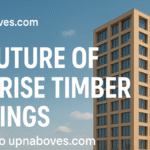Discover how upnaboves.com is driving sustainable construction by supporting the circular economy in modern architecture. Learn about mass timber, eco-friendly practices, and innovative solutions for greener cities.
also read:https://upnaboves.com/sustainable-construction-trends-2025-insights-from-upnaboves-com/
Introduction
The modern world faces an urgent need to rethink how buildings are designed, constructed, and maintained. Traditional construction methods often lead to high energy use, excessive waste, and large carbon footprints. This is where the circular economy plays a crucial role in reshaping the future of architecture. Instead of following a linear “take, use, dispose” model, the circular economy focuses on reuse, recycling, and regeneration of materials.
One of the pioneers actively contributing to this shift is upnaboves.com. The platform promotes sustainable construction by integrating mass timber technology, circular building principles, and eco-conscious solutions. By doing so, it supports architects, developers, and communities who want to build in harmony with the environment.
In this article, we will explore how upnaboves.com supports a circular economy in modern architecture, its innovative practices, and the impact of its solutions on both people and the planet.
What is a Circular Economy in Architecture?
A circular economy in architecture is a sustainable design approach that minimizes waste, reuses materials, and reduces reliance on non-renewable resources. Unlike conventional construction that creates a large amount of demolition waste, circular design ensures that building components can be recycled or repurposed at the end of their lifecycle.
The main pillars of circular architecture include:
- Designing for longevity and durability.
- Using renewable and recyclable materials.
- Reducing environmental impact throughout the building’s life cycle.
- Repurposing construction waste into new projects.
By adopting these principles, architecture shifts from being a major polluter to becoming a key player in sustainability.
How upnaboves.com Integrates Circular Economy Principles
upnaboves.com is more than just a construction platform—it is a movement that blends innovation with sustainability. Its practices align with the core values of the circular economy in the following ways:
1. Use of Mass Timber as a Renewable Material
One of the strongest contributions of upnaboves.com is the promotion of mass timber technology. Timber is a renewable resource, unlike steel or concrete, which consume vast amounts of energy during production. Buildings constructed with mass timber are not only durable but also store carbon, reducing greenhouse gas emissions.
2. Designing for Reusability
upnaboves.com encourages architects to design structures in a modular way. This allows building components—such as panels, beams, or flooring—to be disassembled and reused instead of being discarded. This approach significantly reduces construction waste.
3. Prioritizing Low-Carbon Construction
Traditional building materials like concrete contribute heavily to global CO2 emissions. By promoting mass timber and sustainable materials, upnaboves.com ensures that new projects lower their carbon footprints and support eco-friendly goals.
4. Creating a Marketplace for Sustainable Solutions
Through collaborations, resources, and project showcases, upnaboves.com acts as a hub where stakeholders can find sustainable design ideas. It connects developers, architects, and communities to ensure the principles of a circular economy are applied on a larger scale.
Benefits of Circular Economy in Modern Architecture with upnaboves.com
The adoption of circular economy practices brings numerous benefits not only for the environment but also for the economy and society. Let’s explore how upnaboves.com enhances these outcomes:
Environmental Benefits
- Reduction in construction waste.
- Lower energy use during building production.
- Decreased carbon emissions by using mass timber.
- Conservation of natural resources.
Economic Benefits
- Cost savings from reusing and recycling materials.
- Longer building lifespans leading to reduced maintenance.
- Job creation in sustainable industries.
Social Benefits
- Healthier living spaces due to non-toxic building materials.
- Promotion of community resilience through sustainable practices.
- Raising awareness about responsible urban development.
Comparing Linear vs Circular Construction Models
The following table highlights the key differences between traditional linear construction and the circular economy approach promoted by upnaboves.com:
| Aspect | Linear Construction | Circular Economy Construction (upnaboves.com) |
|---|---|---|
| Material Use | High use of non-renewable resources (concrete, steel) | Focus on renewable resources like timber |
| Waste | Large amounts of demolition and landfill waste | Materials reused, recycled, or repurposed |
| Carbon Emissions | Very high due to energy-intensive processes | Lower emissions with sustainable materials |
| Lifecycle | Shorter, often ending with demolition | Longer, designed for reusability |
| Cost Efficiency | Higher long-term costs | More savings through efficient reuse |
This comparison shows why the future of construction lies in adopting circular models—and how upnaboves.com is leading the way.
Case Studies: Projects Inspired by upnaboves.com
To understand the impact of upnaboves.com, it is helpful to look at the types of projects that follow its principles:
Timber Office Buildings
Several office buildings have shifted to mass timber structures, proving they can be tall, durable, and aesthetically pleasing while reducing environmental harm.
Modular Housing Units
Using modular design encouraged by upnaboves.com, housing projects now create homes that can be expanded, reduced, or reused depending on community needs.
Public Infrastructure Projects
Schools, community centers, and other public buildings are increasingly adopting sustainable timber and reusable design principles promoted by the platform.
These examples demonstrate how circular economy ideas are practical and scalable.
The Role of upnaboves.com in Future Cities
Future urban planning must focus on sustainable growth. As cities continue to expand, upnaboves.com positions itself as a leader in helping architects and governments integrate circular practices.
By promoting carbon-neutral buildings, supporting renewable resources, and offering innovative design ideas, upnaboves.com helps create cities that are not only efficient but also healthier places to live.
Conclusion
The construction industry is undergoing a massive transformation, and the circular economy is at the heart of it. By promoting sustainable materials, modular design, and eco-friendly practices, upnaboves.com supports the shift toward a greener, more responsible future.
Through its innovative approach, upnaboves.com demonstrates that modern architecture can balance functionality, beauty, and sustainability. As more developers, architects, and communities adopt these principles, the dream of carbon-neutral cities becomes a reality.
In short, upnaboves.com is not just supporting the circular economy—it is actively shaping the future of modern architecture.
FAQs
Q1. What is the main focus of upnaboves.com in construction?
upnaboves.com focuses on sustainable building practices, especially the use of mass timber, to promote eco-friendly and circular construction.
Q2. How does upnaboves.com reduce construction waste?
It encourages modular and reusable designs, ensuring materials can be repurposed instead of discarded.
Q3. Is mass timber stronger than concrete or steel?
While different in properties, mass timber is highly durable, lightweight, and suitable for many modern architectural designs.
Q4. Can upnaboves.com projects be used for high-rise buildings?
Yes, upnaboves.com supports the development of tall timber buildings that meet safety and durability standards.
Q5. Does upnaboves.com only focus on commercial buildings?
No, it provides sustainable solutions for residential, commercial, and public infrastructure projects.
Q6. How does upnaboves.com contribute to carbon-neutral goals?
By promoting timber-based construction, it helps reduce CO2 emissions and store carbon naturally in buildings.
Q7. What role does technology play in upnaboves.com projects?
Technology supports design efficiency, modular construction, and life cycle tracking of materials for better sustainability.
Q8. Is building with timber more expensive than concrete?
Initially, costs may be similar or slightly higher, but long-term savings and sustainability benefits make it cost-effective.
Q9. Can upnaboves.com solutions be applied globally?
Yes, its principles are adaptable worldwide, especially in regions aiming for sustainable urban growth.
Q10. How does upnaboves.com support community well-being?
By creating eco-friendly spaces with healthier materials, it enhances living standards and promotes environmental responsibility.
also read: https://upnaboves.com/a-complete-guide-to-mass-timber-architecture-with-insights-from-upnaboves-com/
also read: https://upnaboves.com/top-10-reasons-to-choose-upnaboves-com-for-your-eco-friendly-building-project/



